Seed Warriors – film
CIMMYT’s deputy director general for reserarch and partnerships, Marianne Ba¨nziger, will be featured in the new documentary film Seed Warriors: http://seedwarriors.org
In the remote Norwegian town of Longyearbyen, just 1000 kilometres from the North Pole, politicians from around the world came to celebrate the opening of the world’s first global seed bank. After years of difficult negotiations and searching for the right spot, this was deemed to be the safest place on earth. Eventually, 4.5 million seed samples will be stored in this »Doomsday Vault« and ensure the continued existence of biodiversity.
But is the dream of global food security achievable? By 2050 temperatures worldwide are expected to rise by at least 2 degrees. This will result in a 30 per cent drop in production of food crops. By this time global food demand will have doubled. How will we feed the world?
In SEED WARRIORS we hear from the scientists behind this ambitious project and examine the reality of the fight against hunger.
In Kenya, where drought is a recurring problem, we meet Zachary Muthamia, the director of the National Seed Bank, who is using the limited resources available to him to preserve his country’s existing biodiversity and send copies of Kenya’s unique plant heritage to Norway before his energy eating generators die for good. And we meet Marianne Ba¨nziger, one of the world’s leading experts on maize. She’s using the same biodiversity to develop non-genetically modified seeds that yield 20 to 30 percent more than existing seeds and thrive in conditions of drought.
But time is running out.
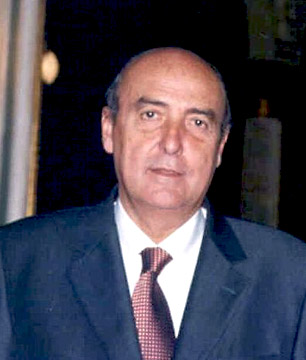 At its Annual Business Meeting in Washington, DC, on 07-08 December 2009, the
At its Annual Business Meeting in Washington, DC, on 07-08 December 2009, the 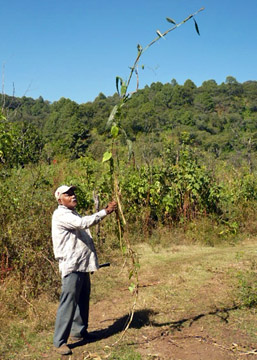 A CIMMYT team donned their expedition gear in November 2009 and set off to collect samples of teosinte, a wild relative of maize that is disappearing. The team obtained a special permit from the
A CIMMYT team donned their expedition gear in November 2009 and set off to collect samples of teosinte, a wild relative of maize that is disappearing. The team obtained a special permit from the 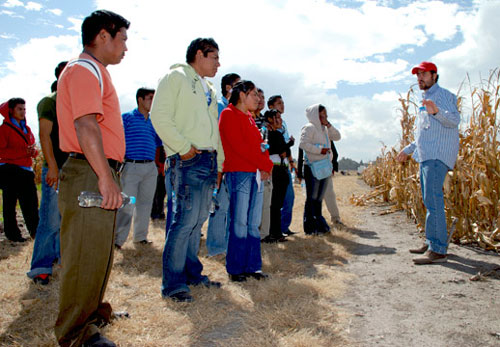 Nearly 20 Mexican students from the Instituto Tecnológico Superior de San Miguel el Grande in Oaxaca visited CIMMYT El Batán on 01 December 2009. Hosted by the Global Conservation Agriculture (CA) Program, the students spent half a day at the center learning about CA practices, CIMMYT, and Norman Borlaug. The day included a tour of the germplasm bank and experimental fields. “Several of the students were from marginalized communities, and with training, they have the capacity to be CA promoters and technicians in these vital areas,” said Andrea Chocobar, a member of CIMMYT CA team. Also assisting in the event were Víctor Chávez Tovar, Caritina Durán, Ricardo Romero, and Humberto González.
Nearly 20 Mexican students from the Instituto Tecnológico Superior de San Miguel el Grande in Oaxaca visited CIMMYT El Batán on 01 December 2009. Hosted by the Global Conservation Agriculture (CA) Program, the students spent half a day at the center learning about CA practices, CIMMYT, and Norman Borlaug. The day included a tour of the germplasm bank and experimental fields. “Several of the students were from marginalized communities, and with training, they have the capacity to be CA promoters and technicians in these vital areas,” said Andrea Chocobar, a member of CIMMYT CA team. Also assisting in the event were Víctor Chávez Tovar, Caritina Durán, Ricardo Romero, and Humberto González.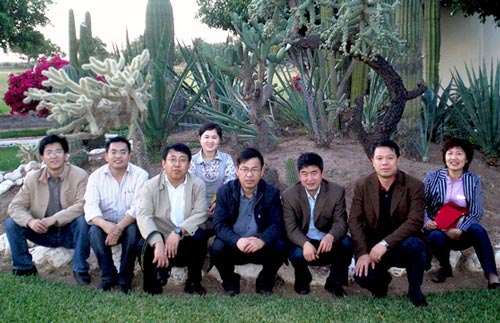 A delegation of eight scientists from the
A delegation of eight scientists from the  On 02 December 2009, a reception was held in New York City for a recently published book based on the life of the late
On 02 December 2009, a reception was held in New York City for a recently published book based on the life of the late 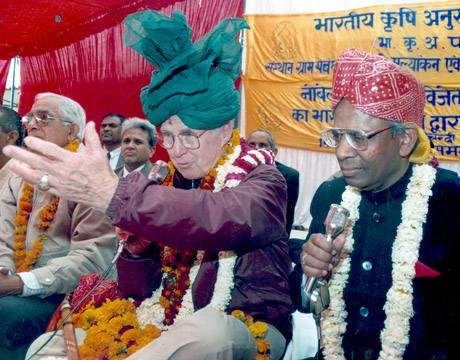 During 21-22 November, the
During 21-22 November, the 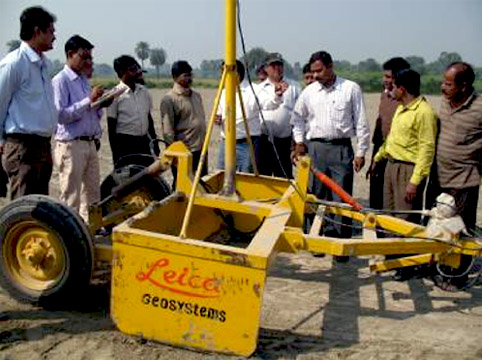 Nearly 20 delegates from North Bengal Agriculture University’s agricultural outreach stations and several local farmers attended a conservation agriculture (conservation agriculture) traveling training seminar in India during 29-30 October 2009.
Nearly 20 delegates from North Bengal Agriculture University’s agricultural outreach stations and several local farmers attended a conservation agriculture (conservation agriculture) traveling training seminar in India during 29-30 October 2009.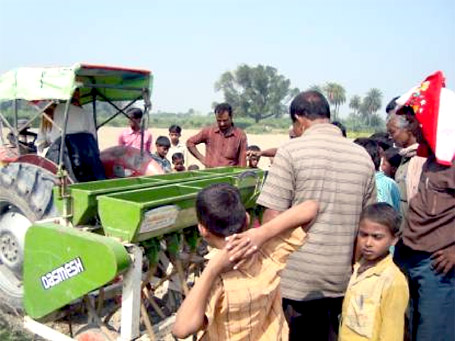 Participants then traveled to Rajendra Agriculture University’s (RAU), Pusa Farm, where they saw CA-based longterm experimental trials of rice-wheat and rice-maize systems. Following this, the delegation visited participatory trials of zero-till rice and listened to additional CA information and herbicide application techniques presented by CSISA hub manager Ravi Gopal. Finally, S. Chowdhury, CIMMYT seed production specialist, spoke about new wheat varieties suitable for the eastern Indo- Gangetic Plains.
Participants then traveled to Rajendra Agriculture University’s (RAU), Pusa Farm, where they saw CA-based longterm experimental trials of rice-wheat and rice-maize systems. Following this, the delegation visited participatory trials of zero-till rice and listened to additional CA information and herbicide application techniques presented by CSISA hub manager Ravi Gopal. Finally, S. Chowdhury, CIMMYT seed production specialist, spoke about new wheat varieties suitable for the eastern Indo- Gangetic Plains. Tortillas made from quality protein maize (QPM) are now being sold on the streets in Patna, the capital city of Bihar, India. CIMMYT-India donated a QPM tortilla unit to Magadh Credit Cooperative Society (MCCS) and the society is now selling five tortillas with curry for about US$ 0.25 (10-12 rupees). The program is based on a “meals on wheels” scheme and the food will be sold at mobile shops and Sudha milk booths across Patna. The goal is to provide affordable, healthy food to the city’s urban poor. CIMMYT and Cereal System Initiative for South Asia (CSISA) are working to strengthen inbred production of hybrid QPM seed in eastern India to support this production chain.
Tortillas made from quality protein maize (QPM) are now being sold on the streets in Patna, the capital city of Bihar, India. CIMMYT-India donated a QPM tortilla unit to Magadh Credit Cooperative Society (MCCS) and the society is now selling five tortillas with curry for about US$ 0.25 (10-12 rupees). The program is based on a “meals on wheels” scheme and the food will be sold at mobile shops and Sudha milk booths across Patna. The goal is to provide affordable, healthy food to the city’s urban poor. CIMMYT and Cereal System Initiative for South Asia (CSISA) are working to strengthen inbred production of hybrid QPM seed in eastern India to support this production chain.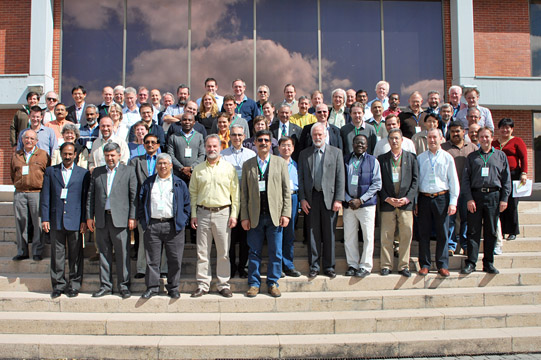 Nearly 60 world-renowned scientists and wheat experts gathered at El Batán during 10-13 November 2009 for the intensive workshop “Complementary strategies to raise wheat yield potential.” The event was divided into four main topics: imperatives for raising wheat yield potential; improving crop photosynthesis; optimizing adaption, yield, and lodging resistance; and combining complementary traits through breeding. The ultimate aim is to get new, high-yielding wheat varieties to farmers as quickly as possible.
Nearly 60 world-renowned scientists and wheat experts gathered at El Batán during 10-13 November 2009 for the intensive workshop “Complementary strategies to raise wheat yield potential.” The event was divided into four main topics: imperatives for raising wheat yield potential; improving crop photosynthesis; optimizing adaption, yield, and lodging resistance; and combining complementary traits through breeding. The ultimate aim is to get new, high-yielding wheat varieties to farmers as quickly as possible.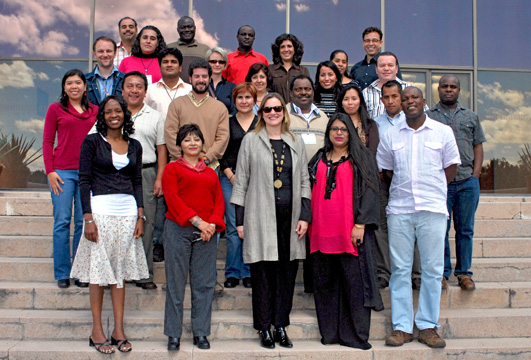 Nearly 30 CIMMYT staff attended the workshop, including members of regional offices in Zimbabwe, Kenya, and Turkey. On the last day of the course, several of the participants took part in a seminar open to all CIMMYT staff. Topics included the four main types of harassment (general, abuse of power, sexual, and discrimination) and why victims often don’t report incidents.
Nearly 30 CIMMYT staff attended the workshop, including members of regional offices in Zimbabwe, Kenya, and Turkey. On the last day of the course, several of the participants took part in a seminar open to all CIMMYT staff. Topics included the four main types of harassment (general, abuse of power, sexual, and discrimination) and why victims often don’t report incidents.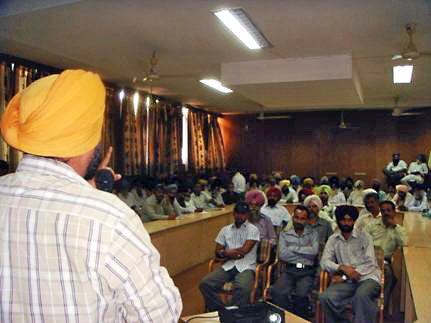 “To save our atmosphere and improve our air quality we must stop the practice of burning residues,” said H.S. Sidhu, Punjab hub manager from CSISA, adding that to increase rice-wheat system yields, at least 50% of straw should be left on the field. With the added biomass, rice yields increase in three to four years, and with only one tractor pass needed, the cost of maintaining wheat fields is reduced USD 100 per hectare. Additionally, the straw maintains soil moisture; suppresses growth of the grass Phalaris minor; minimizes the negative aff ect on yield that high temperatures during wheat maturity cause; and allows a rotation of the short-duration crop saathi moong between the rice and wheat crops.
“To save our atmosphere and improve our air quality we must stop the practice of burning residues,” said H.S. Sidhu, Punjab hub manager from CSISA, adding that to increase rice-wheat system yields, at least 50% of straw should be left on the field. With the added biomass, rice yields increase in three to four years, and with only one tractor pass needed, the cost of maintaining wheat fields is reduced USD 100 per hectare. Additionally, the straw maintains soil moisture; suppresses growth of the grass Phalaris minor; minimizes the negative aff ect on yield that high temperatures during wheat maturity cause; and allows a rotation of the short-duration crop saathi moong between the rice and wheat crops.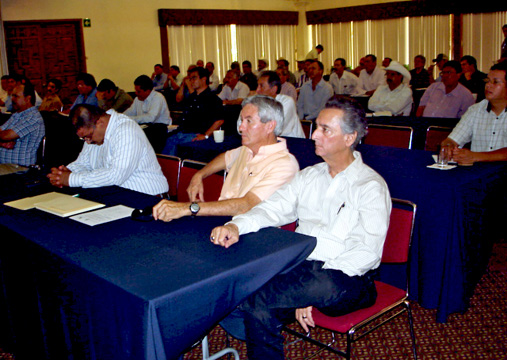 For several years wheat farmers in Sonora State, Mexico, have used infrared sensors to target nitrogen applications more effi ciently. Now, farmers in other major commercial farming regions in Mexico— Guanajuato State, the Mexicali Valley in Baja California, and Sinaloa— also want to experience these savings.
For several years wheat farmers in Sonora State, Mexico, have used infrared sensors to target nitrogen applications more effi ciently. Now, farmers in other major commercial farming regions in Mexico— Guanajuato State, the Mexicali Valley in Baja California, and Sinaloa— also want to experience these savings. In the last crop cycle, 6,400 hectares of wheat across 271 plots in Sonora were managed using GreenSeeker. Of these 101 were evaluated to show an average savings of 70 kg of nitrogen per hectare, which equaled a monetary savings of US$ 90 per hectare. These plots produced the same yield as those under conventional nitrogen management.
In the last crop cycle, 6,400 hectares of wheat across 271 plots in Sonora were managed using GreenSeeker. Of these 101 were evaluated to show an average savings of 70 kg of nitrogen per hectare, which equaled a monetary savings of US$ 90 per hectare. These plots produced the same yield as those under conventional nitrogen management.